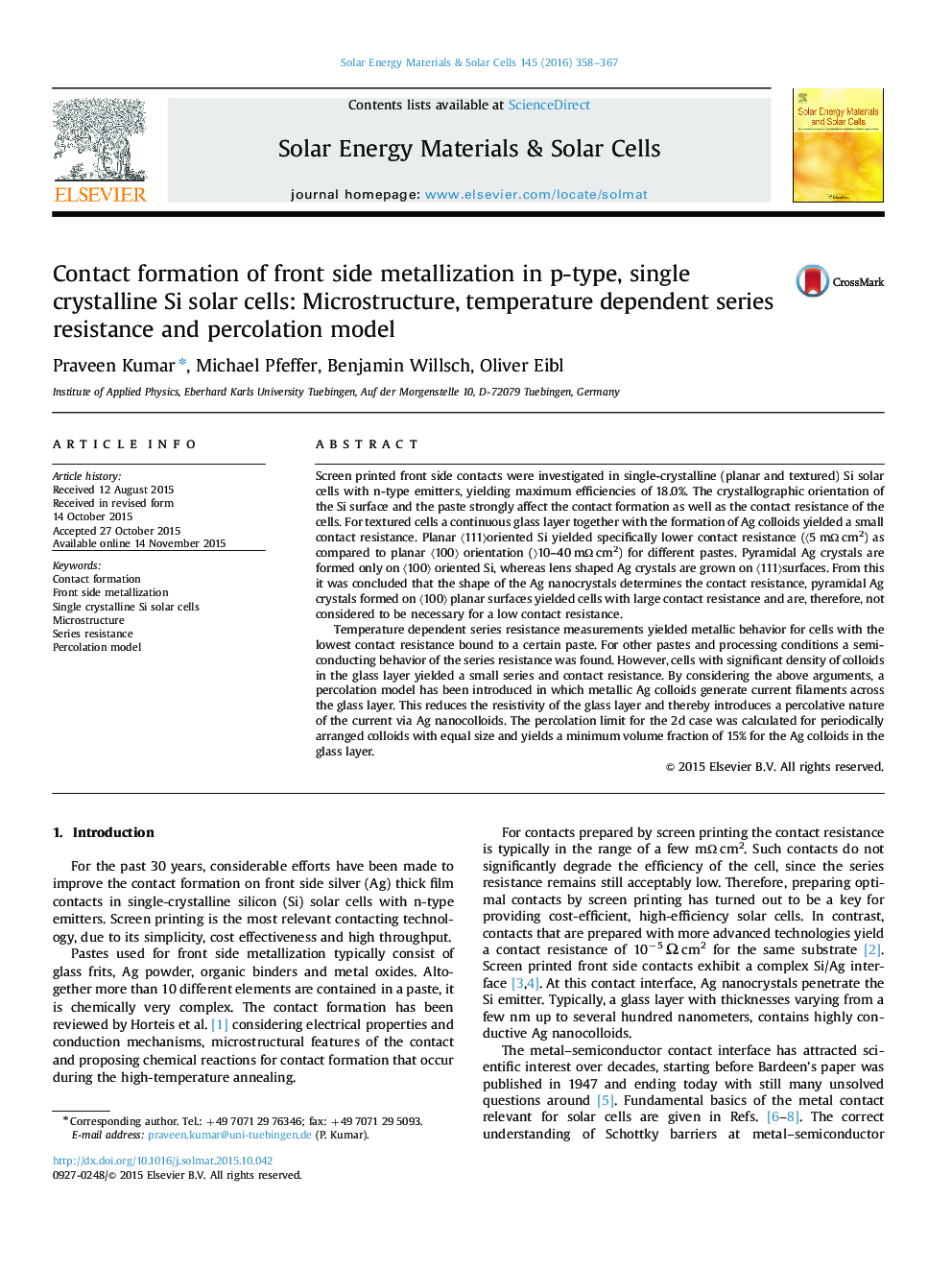| Article ID | Journal | Published Year | Pages | File Type |
|---|---|---|---|---|
| 77690 | Solar Energy Materials and Solar Cells | 2016 | 10 Pages |
•Influence of the Si orientation on the contact resistance.•The shape of the Ag nanocrystals determines the contact resistance.•Ag nanocolloids density correlates with the low contact resistance.•Wetting behavior of the paste.•Percolative nature of the charge transport via Ag nanocolloids.
Screen printed front side contacts were investigated in single-crystalline (planar and textured) Si solar cells with n-type emitters, yielding maximum efficiencies of 18.0%. The crystallographic orientation of the Si surface and the paste strongly affect the contact formation as well as the contact resistance of the cells. For textured cells a continuous glass layer together with the formation of Ag colloids yielded a small contact resistance. Planar 〈111〉oriented Si yielded specifically lower contact resistance (〈5 mΩ cm2) as compared to planar 〈100〉 orientation (〉10–40 mΩ cm2) for different pastes. Pyramidal Ag crystals are formed only on 〈100〉 oriented Si, whereas lens shaped Ag crystals are grown on 〈111〉surfaces. From this it was concluded that the shape of the Ag nanocrystals determines the contact resistance, pyramidal Ag crystals formed on 〈100〉 planar surfaces yielded cells with large contact resistance and are, therefore, not considered to be necessary for a low contact resistance.Temperature dependent series resistance measurements yielded metallic behavior for cells with the lowest contact resistance bound to a certain paste. For other pastes and processing conditions a semiconducting behavior of the series resistance was found. However, cells with significant density of colloids in the glass layer yielded a small series and contact resistance. By considering the above arguments, a percolation model has been introduced in which metallic Ag colloids generate current filaments across the glass layer. This reduces the resistivity of the glass layer and thereby introduces a percolative nature of the current via Ag nanocolloids. The percolation limit for the 2d case was calculated for periodically arranged colloids with equal size and yields a minimum volume fraction of 15% for the Ag colloids in the glass layer.
